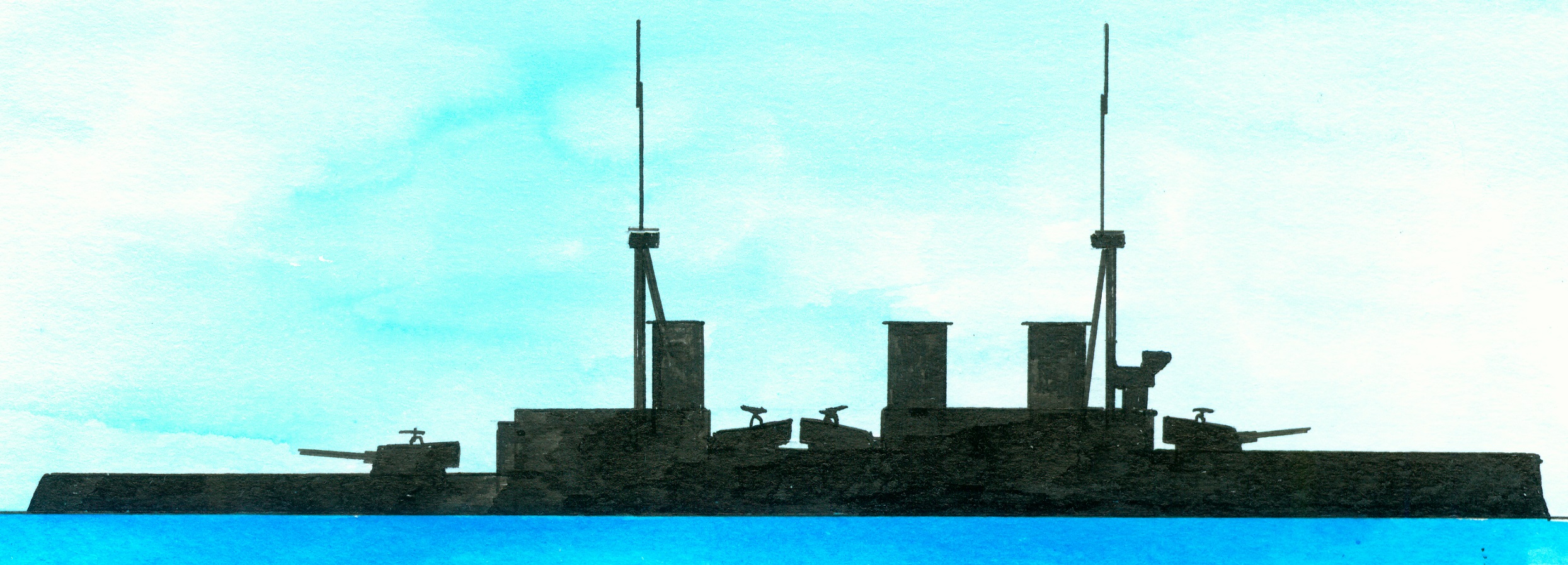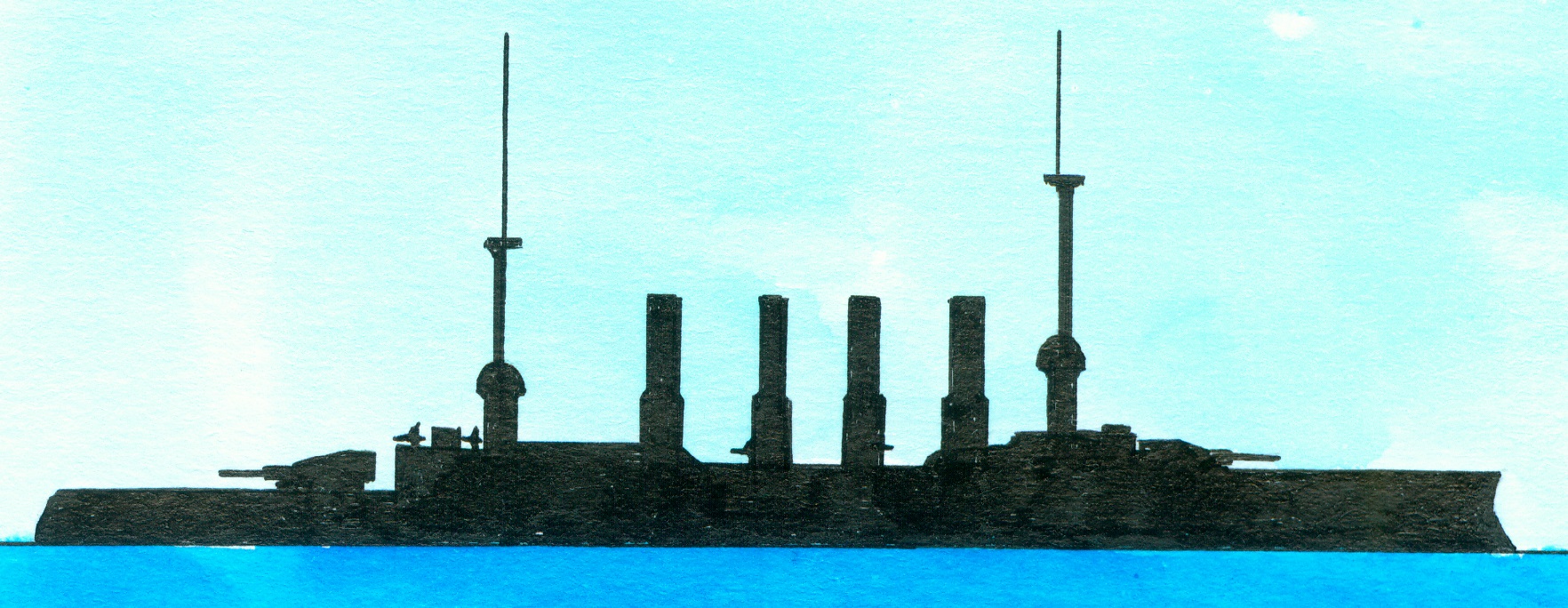Notes
1. John Arbuthnot (Jacky or Jackie) Fisher, 1st Baron Fisher (25 January 1841 Ramboda, Ceylon-10 July 1920)St. James‘s Square, London, England, an British admiral of the Fleet well known for his reform of the Royal British Navy. First Sea Lord in 1904.
Moltke-class
2. Moltke-class. Sister ship Moltke. Building ordered on 8 April 1909, laid down at the shipyard of Blohm&Voss, Hamburg, Germany on 28 August 1909, launched on 28 March 1911, commissioned on 2 July 1912, handed over to the Turkish government on 16 August 1914, renamed Yavuz Sultan Selim and commissioned in the Turkish navy. Decommissioned on 20 December 1950, renamed Yavuz in 1935, stricken on 14 November 1954 and finally broken up in 1973. Displacement 22.979 tons/22.616 long tons (design)-25.400 tons/25.000 long tons (full loaded) and as dimensions 186,6 x 30 x 9,2 metres or 612.2 x 98.5 x 30.3 feet. The Parsons turbines supplied via 4 screws 51.289 (design)-84.609 (maximum) shp allowing a speed of 25,5 (design)-28,4 (maximum) knots and with a speed of 14 knots a range of 4.120 nautical miles. Her crew numbered 1.053 men included 43 officers. The armour consisted of a 10-29cm/3.9-11” thick belt. a 2,54-7,62cm/1-3” inch deck with the gun turrets, barbettes and conning tower protected by respectively 23cm/9.1”, 23cm/9.1” and 34cm/14”. The armament consisted of 5x2-28cm/11” L/50 guns, 12-15cm/5.9” guns and 12-8,8cm/3.5“ guns.
3. Laid down at A.G. Vulcan, Stettin, Germany with yard number 312 in 1910, launched on 16 May 1911, commissioned on 10 May 1912, handed over to the Ottoman Empire on 16 August 1914, renamed Midilli and mined and sunk on 20 January 1919 off Imbros. Of the Magdeburg-class, general specifications: Displacement 4.570 tons and as dimensions 138,7 x 13,5 c 4,4 metres or 455.1 x 44.3 x 14.5 feet. The 2 AE Vulcan steam turbines and 16 water tube boilers supplied 25.000 shp allowing a speed of 27,5 knots, with a speed of 12 knots a range of 5.820 nautical miles. Crew numbering 354 men, armour consisting of 1-6cm/2.4” thick belt and the conning tower protected by 10cm/3.9”. Original armament consisted of 12-10,5cm L/45 quick firing guns (replaced in 1917 by 8-15cm/5.9“ guns), 120 mines and 2-50cm torpedo tubes.
Invincible-class
4. Laid down at the shipyard of Armstrong, Whitworth&Co. Ltd, Tyneside, Elswick, England on 2 April 1906, launched at 3 p.m. by Lady Allendale on 13 April 1907, officially completed on 16 March 1909, commissioned on 20 March 1909 and sunk on 31 May 1916 during the Battle of Jutland when a magazine exploded after the Q turret was hit. Building costs 1.725.739 (with guns)-1.768.995 (without guns) pound sterling. Of the Invincible-class consisting of the Invincible, Indomitable and Inflexible. Preceded by the Minotaur-class armoured cruisers and succeeded by the Indefatigable-class. The concept for the Invincible-class battle cruisers came from the British admiral Sir John Fisher.(1) The idea was to design a ship fast enough to escape from stronger opponents like battleships and strong enough to destroy nearly all other ships while the battle cruisers were as heavily armed as most of the battleships of their time. This became clear while the Invincible and Flexible were mainly responsible for destroying the German armoured cruisers SMS Scharnhorst (2) and Gneisenau (3) in the Battle of the Falkland Islands (4) but against enemy battleships coming in problems like the Invincible lost in the Battle of Jutland.(5) Classified as armoured cruisers until an Admiralty order dated 24 November 1911 otherwise decided. General technical specifications of this class. A displacement of 17.530 tons/17.250 long tons (loaded)-20.750 tons20.420 long tons (deep loaded) and as dimensions 172,8 (over all) x 23,9 x 9,1 (deep loaded) metres or 567 x 78.5 x 30 feet. The two paired sets of Parsons direct-drive steam turbines and 31 Yarrow water tube boilers supplied via 4 shafts 41.000 shp (design) allowing a speed of 25 (design)-26 (trials) knots and with a speed of 10 knots and maximum coal bunker capacity of 3.050 tons/3.000 long tons and 737 tons/725 long tons fuel-oil a range of 3.090 nautical miles. The crew numbered 784 men. The armour consisted of a 10,2-15,2cm-4-6” thick belt, 3,8-6,4cm/1.5-2,5” thick decks, 6,4cm/2.5” thick torpedo bulkheads with the gun turrets, barbettes and conning tower protected by respectively 17,8cm/7”, 17,8cm/7” and 15,2-25,4cm/6-10”. The armament consisted of 4x2-30,5cm/12” Mk X breech loading guns. 16x1-10,2cm/4” quick firing Mk III guns, 7 Maxim guns and 5z1-45cm/18” submerged torpedo tubes.
Scharnhorst-class
5. German armoured cruisers Scharnhorst and the Gneisenau (both of the Scharnhorst-class. General technical specifications. Displacement 11.616 tons/11.433 long tons12.804 short tons (standard)-12.985 tons/12.780 long tons/14.314 short tons (full load) with as dimensions 143.8 (waterline) 144,6 (overall) x 21,6 x 8,37 metres or 472-474.5 x 70.10 x 26.6 feet. The 3 shaft triple expansion engines and 18 water-tube boilers supplied 26.000 ihp (design) allowing a speed of 22,7 knots; during the trials 28.782 ihp and a speed of 23m5 knots. Coal bunker capacity 800 tons/880 short tons (standard)-2.000 tons/2.200 short tons (maximum). Range with a cruising speed of 12 knots was 4.800 nautical miles. Their crew numbered 840 men (included 52 officers). The armour consisted of a 15cm/5.9” thick belt, a 3,5-6cm/1.4-2.4” thick deck and with the gun turrets protected by 18c,/7.1” thick armour. The armament consisted of 2x4&4x1-21cm/8.3” L/40 quick firing guns, 6x1-15cm/5.9” L/40 quick firing guns, 18x1-8,8
6. Fisher referred to the Gallipoli or Dardanelles Campaign between 25 April 1915-9 January 1916 which was a complete failure and in which British (including Dominions) and French forces landed on the Gallipoli Peninsula with the intention to capture Constantinople [=Istanbul] with as casualties 252.000 men on Allied side!
Courageous-class
7. The Baltic Project? Fisher at the time Admiral of the Fleet proposed to land troops on the German Baltic Coast supported by especially shallow draught battle cruisers of the Courageous-class. The Courageous and Glorious and half sister Furious were commissioned in 1917, all three later converted into aircraft carriers.




